4
Jul
Occlusal precision factors of crowns on implants with analogue and digital workflow
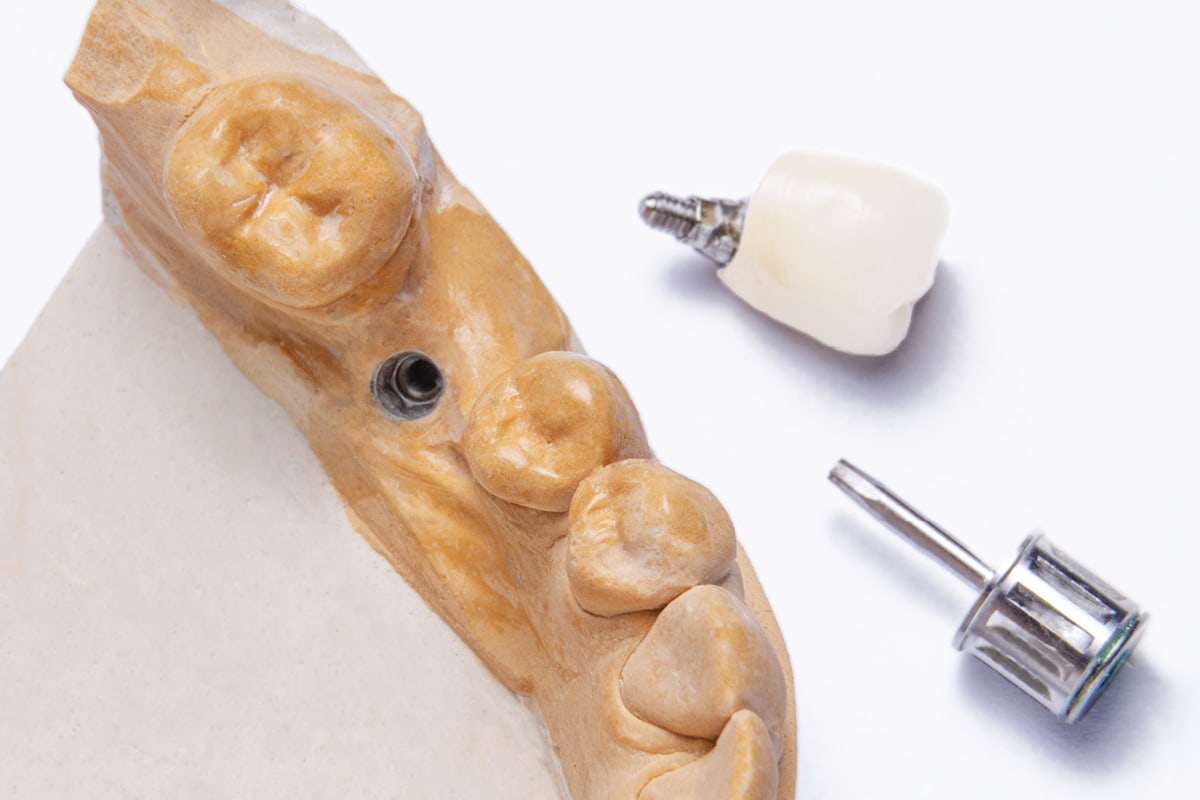
The precision of crowns at the occlusal level is an extremely important aspect of prosthetic rehabilitation (1).
From a clinical point of view, excessive contact on a tooth/implant can lead to pre-contact or interference during eccentric movements of the mandible, while loose contact would be inconsistent with the occlusion (2).
In both cases, the risk of mechanical complications involving the prosthetic element and/or biological complications can increase significantly (3,4).
In compliance with the occlusal schemes with which implant patients are rehabilitated, there are often occlusal clearances to be respected between the antagonistic surfaces; consequently, accuracy in the processes of clinical data acquisition and prosthesis manufacture is fundamental (5–8).
Occlusal precision factors
Depending on the workflow (analogue/digital), and the materials used to create the prosthesis, there are several factors capable of influencing the occlusal precision of crowns on implants.
These include:
- The accuracy of the master model;
- The detection of the analogue/digital occlusion and the subsequent positioning of the models in the articulator;
- The movement of the analogues in the plaster model originating from the impression. When working to produce a digital model, the placement of analogues in the 3D printed model and the model manufacturing tolerances relative to the 3D printer or resin used;
- The tolerances between the different implant-prosthetic components (9,10);
- The prosthesis manufacturing procedures and the presence of aesthetic coatings;
- The finalization procedures, such as glazing and polishing.
The accuracy of the master model
As regards the first point, i.e. the accuracy of the master model, the analogue impression technique (pick-up or tear-off), the materials used (polyvinyl siloxanes or polyethers), the splinting or not of the transfers and the manufacturing technique of the plaster model can certainly influence the accuracy of the master model (11,12).
Scanning strategies and techniques
If, on the other hand, the workflow is digital, intraoral scanning with all the components and techniques (scan body, scanning strategy, arch length, etc.) or scanning of the master modelwith lab scan bodies if moving from a physical to a digital workflow are decisivefor the realization of thevirtual model (13,14).
Model movements and jaw positioning
To date, the creation of type IV plaster models from PVS impressions appears to be more accurate than intra-oral scans followed by 3D printing of the model (15).
The positioning of the analogue in the 3D printed model and the management of the manufacturing tolerances of the model also have an impact here (16).
When moving from an analogue to a digital workflow and thus scanning a plaster model with a laboratory scanner, other errors resulting from the scanning process can accumulate (17), depending on the type of desktop scanner used (18,19).
The spatial positioning of the patient’s jaws relative to the hinge axis and consequently also the maxillomandibular relationship can determine discrepancies and inaccuracies in the manufacturing of the prostheses as they directly influence the modelling of the cusps and pits, and the inclination of the dental elements in the prosthesis (20–22).
Tolerances between the different implant-prosthetic components
The manufacturing tolerances between the different implant-prosthetic components, i.e. between the implant and pick-up transfer, between transfer and analogues, between analogues and abutments or Ti-base, and between Ti-base and implants at the connection level are also decisive in the precision of construction of the prosthesis (9).
Even in the digital workflow, many of these tolerances are present if the workflow involves printing the model in 3D (23); if the workflow is full-digital; however, discrepancies can still result from an incorrect alignment between the scan body mesh and the library files used by the dental technician to identify the 3D position of the implant-prosthetic connection (24,25).
Manufacturing and finalization procedures
Instead, as regards the manufacturing mechanisms of the prosthesis, these can alter the final result also in relation to the materials with which they are made.
For example, a zirconia crown will show errors coming from the milling tolerances of the pre-sintered block, from the dimensional contractions due to sintering, from the glazing, polishing and cementation procedures on Ti-base (5,26,27).
Within this category it must be remembered that different thicknesses and shapes of zirconia restorations could cause different types of contractions with consequent errors in the occlusal precision of the crowns (26).
Polishing procedures can increase occlusal clearance with the antagonist, given the removal of a thin layer of glass ceramic of approximately 25 μm (28).
On the other hand, the cementation on Ti-base could reduce occlusal clearance, resulting in a crown overhang of approximately 20 μm (27).
Conclusions
In conclusion, the occlusal precision of crowns on implants depends on a variety of factors linked to both the workflow used (analogue or digital) and the materials and manufacturing techniques used.
Understanding and controlling these factors is essential to reduce occlusal discrepancies and ensure optimal prosthetic results.
Careful management of each phase of the process can significantly improve the quality and predictability of prosthetic rehabilitations.
References
- Lops, D., Bruna, E., & Fabianelli, A. (2014). La protesi implantare. Dental Cadmos, 6(82), 386.
- Shillinburg HT, et al. Fundamentals of fixed prosthodontics. Quintessence Publishing Company, 1997.
- Gaddale R, Mishra SK, Chowdhary R. Complications of screw- and cement-retained implant-supported full-arch restorations: a systematic review and meta-analysis. Int J Oral Implantol (Berl). 2020;13(1):11–40.
- Goodacre CJ, Bernal G, Rungcharassaeng K, Kan JYK. Clinical complications with implants and implant prostheses. J Prosthet Dent. 2003 Aug;90(2):121–32.
- He M, Pu T, Ding Q, Sun Y, Wang P, Sun Y, et al. Occlusal contact and clearance of posterior implant-supported single crowns designed by two different methods: a self-controlled study. BMC Oral Health. 2023 Mar 15;23:151.
- Yoon D, Pannu D, Hunt M, Londono J. Occlusal considerations for full-arch implant-supported prostheses: A guideline. Dentistry Review. 2022 Jun 1;2(2):100042.
- Kim Y, Oh TJ, Misch CE, Wang HL. Occlusal considerations in implant therapy: clinical guidelines with biomechanical rationale. Clin Oral Implants Res. 2005 Feb;16(1):26–35.
- D’Amico C, Bocchieri S, Sambataro S, Surace G, Stumpo C, Fiorillo L. Occlusal Load Considerations in Implant-Supported Fixed Restorations. Prosthesis. 2020 Oct 1;2(4):252–65.
- Kim S, Nicholls JI, Han CH, Lee KW. Displacement of implant components from impressions to definitive casts. Int J Oral Maxillofac Implants. 2006 Oct;21(5):747–55.
- Diker E, Terzioglu H, Gouveia DNM, Donmez MB, Seidt J, Yilmaz B. Effect of material type, torque value, and sterilization on linear displacements of a scan body: An in vitro study. Clin Implant Dent Relat Res. 2023 Apr;25(2):419–25.
- Baldissara P, Koci B, Messias AM, Meneghello R, Ghelli F, Gatto MR, et al. Assessment of impression material accuracy in complete-arch restorations on four implants. J Prosthet Dent. 2021 Jan 29;
- Grande F, Celeghin G, Gallinaro F, Mobilio N, Catapano S. Comparison of the accuracy between full-arch digital scans and scannable impression materials: an in vitro study. Minerva Dent Oral Sc [Internet]. 2023 Apr [cited 2023 Jul 3]; Available from: https://www.minervamedica.it/index2.php?show=R18Y9999N00A23041706
- Celeghin G, Franceschetti G, Mobilio N, Fasiol A, Catapano S, Corsalini M, et al. Complete-Arch Accuracy of Four Intraoral Scanners: An In Vitro Study. Healthcare. 2021 Mar 1;9(3):246.
- Nuytens P, Grande F, D’haese R, Salameh Z, Lepidi L. Novel complete-arch pillar system (CAPS) to register implant position and maxillomandibular relationship in one single visit. J Dent. 2024 Feb 10;143:104885.
- Abduo J. Accuracy of casts produced from conventional and digital workflows: A qualitative and quantitative analyses. J Adv Prosthodont. 2019 Apr;11(2):138–46.
- Revilla-León M, Gonzalez-Martín Ó, Pérez López J, Sánchez-Rubio JL, Özcan M. Position Accuracy of Implant Analogs on 3D Printed Polymer versus Conventional Dental Stone Casts Measured Using a Coordinate Measuring Machine. J Prosthodont. 2018 Jul;27(6):560–7.
- Gao H, Liu X, Liu M, Yang X, Tan J. Accuracy of three digital scanning methods for complete-arch tooth preparation: An in vitro comparison. J Prosthet Dent. 2022 Nov;128(5):1001–8.
- Lee SJ, Betensky RA, Gianneschi GE, Gallucci GO. Accuracy of digital versus conventional implant impressions. Clin Oral Implants Res. 2015 Jun;26(6):715–9.
- UNE-EN ISO 12836-2015,Dentistry – Digitizing devices for CAD/CAM systems for indirect dental restorations – Test methods for assessing accuracy (ISO 12836:2015).
- Nuytens P, Grande F, Li J, Lepidi L. Maxillomandibular relationship and virtual facebow integration in complete-arch intraoral implant scan: A novel clinical technique. J Prosthodont. 2024 Mar 20;
- Lepidi L, Kim BC, Giberti L, Suriano C, Li J, Grande F. The 4D virtual patient: A proof of concept in digital dentistry. J Prosthet Dent. 2024 Apr 13;S0022-3913(24)00194-X.
- Grande F, Lepidi L, Tesini F, Acquadro A, Valenti C, Pagano S, et al. Investigation of the precision of a novel jaw tracking system in recording mandibular movements: A preliminary clinical study. J Dent. 2024 May 6;146:105047.
- Maria R, Tan MY, Wong KM, Lee BCH, Chia VAP, Tan KBC. Accuracy of Implant Analogs in 3D Printed Resin Models. J Prosthodont. 2021 Jan;30(1):57–64.
- Mangano F, Lerner H, Margiani B, Solop I, Latuta N, Admakin O. Congruence between Meshes and Library Files of Implant Scanbodies: An In Vitro Study Comparing Five Intraoral Scanners. Journal of Clinical Medicine. 2020 Jul;9(7):2174.
- Schmidt A, Billig JW, Schlenz MA, Rehmann P, Wöstmann B. Influence of the Accuracy of Intraoral Scanbodies on Implant Position: Differences in Manufacturing Tolerances. Int J Prosthodont. 2019 Oct;32(5):430–2.
- Ohkuma K, Kameda T, Terada K. Five-axis laser milling system that realizes more accurate zirconia CAD/CAM crowns by direct milling from fully sintered blocks. Dent Mater J. 2019 Feb 8;38(1):52–60.
- Mehl C, Harder S, Steiner M, Vollrath O, Kern M. Influence of cement film thickness on the retention of implant-retained crowns. J Prosthodont. 2013 Dec;22(8):618–25.
- Wiley MG, Windeler AS, Barghi N, Duke SE. The vertical dimensional change resulting from polishing or glazing porcelain. J Prosthet Dent. 1989 Jul;62(1):32–4.
Would you like more information about Zhermack Dental products and solutions?
Contact us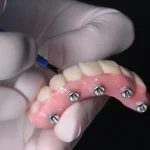
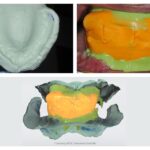
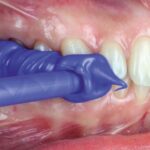
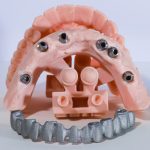

 Zhermack SpA has been one of the most important producers and international distributors of alginates, gypsums and silicone compounds for the dental sector for over 40 years. It has also developed solutions for the industrial and wellbeing sectors.
Zhermack SpA - Via Bovazecchino, 100 - 45021 Badia Polesine (RO), Italy.
Zhermack SpA has been one of the most important producers and international distributors of alginates, gypsums and silicone compounds for the dental sector for over 40 years. It has also developed solutions for the industrial and wellbeing sectors.
Zhermack SpA - Via Bovazecchino, 100 - 45021 Badia Polesine (RO), Italy.


